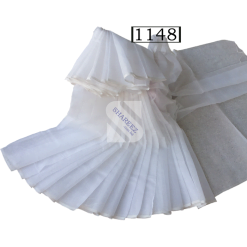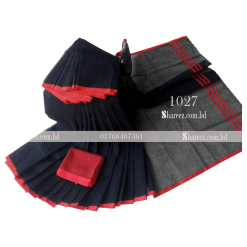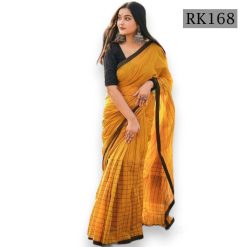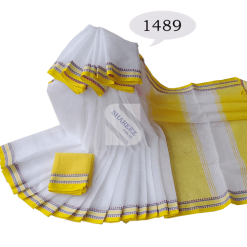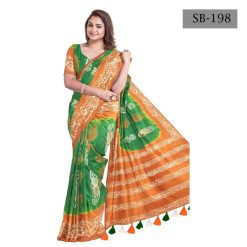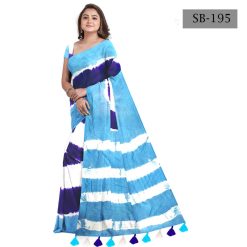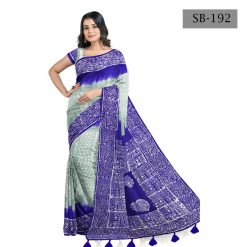ফ্যাশন, লাইফ স্টাইল
Timeless Beauty of the Saree
Timeless Beauty of the Saree, the saree, also known as sari or sharee, represents more than just a piece of cloth; it symbolizes grace, tradition, and cultural identity across the Asian continent. For centuries, women have embraced sarees, celebrating the elegance and versatility that this timeless garment offers.
The Origins and Evolution of the Saree
The saree’s history traces back to the Indus Valley Civilization, around 2800-1800 BCE, making it one of the world’s oldest forms of attire. Initially, women wore sarees as simple, unstitched garments, but they evolved over time into more elaborate pieces, reflecting the rich cultural diversity of the region.
The word “sari” originates from the Sanskrit word “śāṭī,” meaning a strip of cloth. In ancient times, women wore sarees without a blouse or petticoat, as documented in Indian sculptures and paintings. As time progressed, different regions developed their unique draping styles, influenced by climate and cultural practices. For instance, the Nivi drape from Andhra Pradesh dominates today’s styles, but regional variations like the Mundum Neriyathum from Kerala and the Bengali Atpoure Shari continue to thrive.
The Cultural Significance of the Saree
The saree carries deep cultural significance in the lives of women across Asia. In countries like India, Bangladesh, Sri Lanka, Nepal, and Pakistan, women wear sarees for almost every significant occasion, from weddings to festivals. The saree symbolizes purity, fertility, and the continuity of tradition.

Moreover, the saree’s versatility enhances its beauty. A single piece of cloth, typically ranging from 5 to 9 yards, can be draped in multiple styles, each reflecting the wearer’s personal and cultural identity. This ability to highlight a woman’s natural beauty makes the saree a unique garment that balances modesty with sophistication.
The Modern Appeal: Why Women Love Sarees
Despite the rise of modern fashion, the saree remains incredibly popular among women of all ages. Several reasons contribute to its enduring appeal:
- Elegance and Grace: The saree offers unmatched elegance, accentuating curves and highlighting the waist in a way that no other garment can replicate.
- Cultural Identity: Wearing a saree allows many women to connect with their roots. It’s a celebration of their heritage and an expression of cultural pride.
- Versatility: The saree adapts to any occasion—be it formal events, casual outings, or festive celebrations. The fabric, color, and embellishments can be chosen to match any mood or setting.
- Craftsmanship: Sarees often feature intricate embroidery, weaving, and dyeing techniques, transforming them into works of art. Handloom sarees, in particular, are treasured for their craftsmanship and the stories they tell.
- Celebrity Influence: The saree has gained global recognition, with celebrities and fashion icons showcasing this ethnic wear at international events. This visibility has further fueled its popularity among younger generations.
Conclusion
In conclusion, the saree, sari, or sharee—by any name—continues to stand as a testament to the enduring appeal of traditional wear. It embodies feminine beauty and cultural pride, making it a cherished garment for women across Asia and beyond. Whether it’s the intricate designs of a Banarasi silk saree, the simplicity of a cotton saree, or the elegance of a Kanjivaram, this timeless attire captivates women who value the blend of tradition and style.
As fashion trends evolve, the saree remains a reminder that true beauty transcends time, and some traditions are simply too precious to fade away.
TRADE NOW | EARN NOW | HOME | COTTON SAREE
Check our bestsellers!





